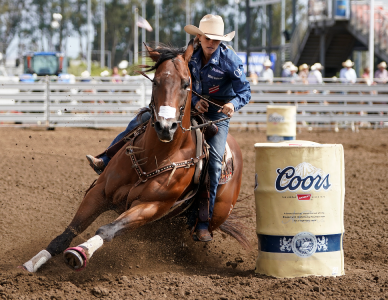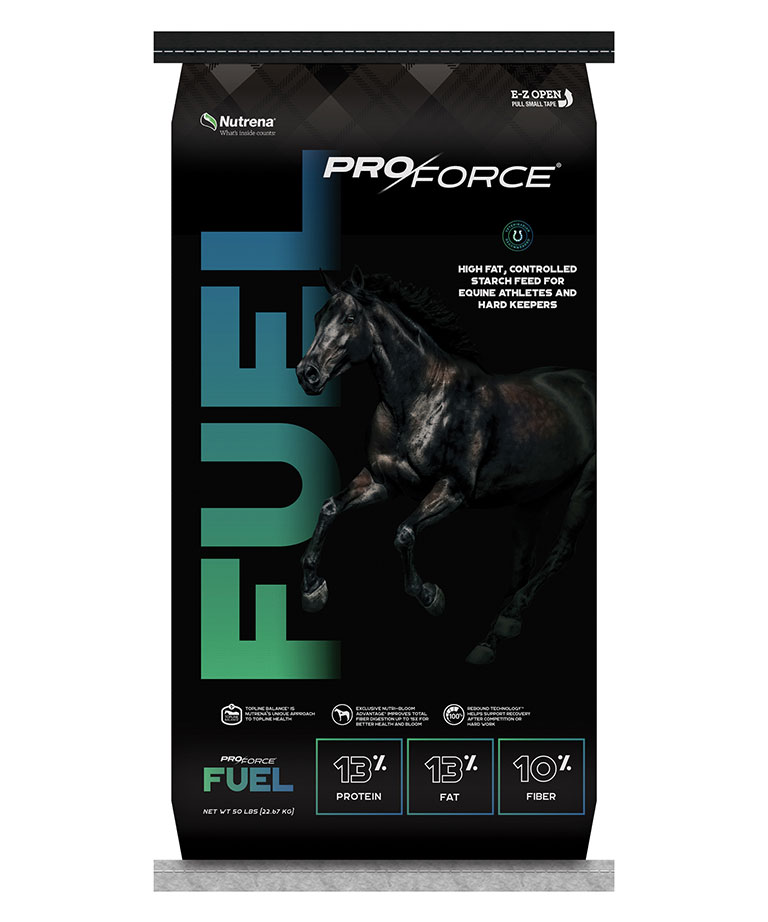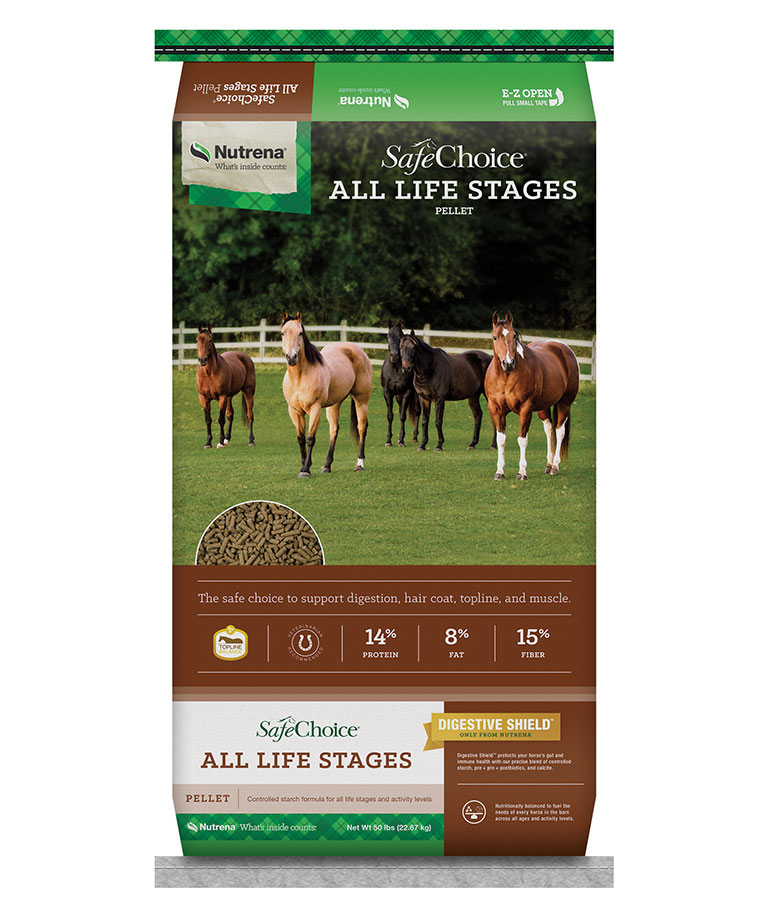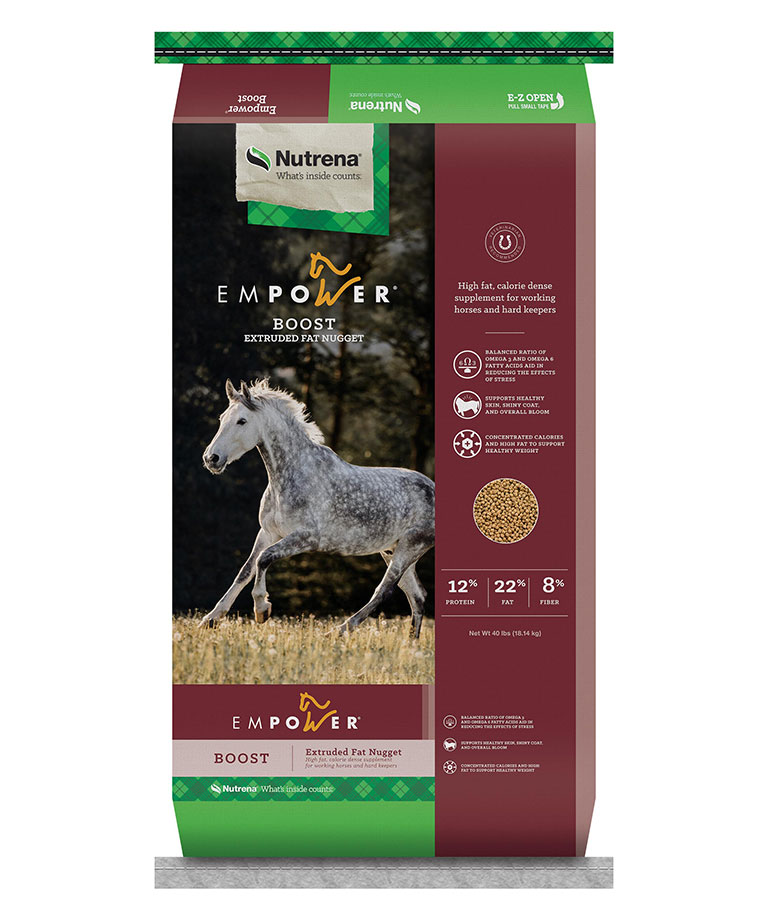Performance Horses and Muscle Recovery

In various disciplines speed, strength, collection and stamina all play into the difference between earning a big paycheck and awards or going home empty handed. Performance horses need to be able to come out of the stall ready to win, whether it’s the first day of the event or the last. Like their human athlete counterparts, a solid nutrition plan is the fuel that allows performance horses to compete and perform at their highest level. With Rebound Technology…recovery isn’t an afterthought, the horse is always being fed for optimal performance.
Enhancing Performance Horse Recovery with Rebound Technology
Rebound Technology is a unique, proprietary blend of research-backed chromium and branched chain amino acids (BCAAs) to support exercise recovery. When performance horses have the right nutrition, they are more able to quickly return to peak performance after strenuous training sessions and/or competitions. Each time an equine athlete competes or performs there is an opportunity to increase its value, that of future offspring or help a rider achieve his or her goals. That’s why avoiding muscle fatigue and giving horses the ability to rebound from exercise and efficiently train for performance activities is a high priority for horse owners and trainers alike.
What Happens When Performance Horses Exercise
When horses exercise, they experience an increased cortisol level, reduced muscle glycogen, increased Serum Amyloid A (normal inflammation), increased heart rate, reduced blood sugar and reduced plasma BCAAs. Three major factors in improving athletic performance in the horse are muscle development, muscle recovery and glycogen availability. Faster glycogen replenishment in the horse could lead to increased muscular performance.
As horses work, ATP or energy enables their muscle fibers to quickly contract and relax. Each muscle cell contains only enough ATP for a few contractions, which means horses must continuously resynthesize ATP during exercise primarily via stored glycogen. The more glucose we can make available to the cells in the performance horse, the better able they are to quickly replenish glycogen. The unique ingredient combination found in Rebound Technology„¢ optimizes the opportunity for these glycogen and glucose levels to rebound after work.
The essential BCAAs leucine, isoleucine and valine help to decrease muscle fatigue and improve muscle recovery19. Research with BCAAs has demonstrated that leucine infusion along with glucose infusion appears to increase whole body glucose availability, potentially increasing glycogen synthesis in horses1. Oral leucine supplementation has shown increased markers associated with protein synthesis in the post-exercised performance horse. Providing an increased rate of protein synthesis would increase both muscle mass and muscle recovery, both of which may improve athletic performance. In humans, BCAA supplementation prior to exercise appeared to reduce delayed onset muscle soreness and muscle fatigue, increased insulin response along with increased post-exercise rates of glycogen synthesis 5,7,8,9,10. Increased availability of amino acids and glucose demonstrated in research shows an improvement not only in protein synthesis, but also a decrease in protein breakdown19.
Chromium’s Role in Recovery and Protein Synthesis
Recently FDA and AAFCO approved chromium propionate as a feed ingredient. Found in Rebound Technology, it supports glucose getting to the cells where it’s needed for energy to repair and replenish after work. Chromium is involved in carbohydrate metabolism and other insulin dependent processes such as protein and lipid metabolism12. As performance horses exercise, increased levels of cortisol work against insulin as insulin attempts to move glucose and nutrients into muscle cells. Chromium supports more efficient insulin function by stabilizing insulin receptors leading to more efficient movement of glucose from the blood stream, thus reducing the negative impacts of exercise stress and increasing the body’s physiologic ability to move nutrients into muscle cells to function efficiently during exercise and rebuild muscle broken down following exercise13. Research in Thoroughbreds during exercise has demonstrated blood glucose was controlled on lower insulin levels versus control, which demonstrated higher insulin sensitivity when they were supplemented with chromium11.
Another potential benefit to the improved insulin sensitivity demonstrated in performance horses supplemented with chromium propionate is in supporting the signaling pathway for protein synthesis, which is the re-building of structures. When insulin sensitivity is improved, glucose can more readily be available for protein synthesis. Insulin infusion in mature horses was shown to stimulate whole-body protein synthesis and activate the upstream and downstream effectors of mTor signaling in the gluteus medius muscle1. Simply put, this means is there was an increase in protein synthesis, or a re-building of muscle.
Glucose – An Important Component for the Working Horse
Glucose is the key energy source for every cell in the horse’s body and BCAAs stimulate protein synthesis. The proprietary BCAAs and chromium in Rebound Technology„¢ have been shown to make this key energy source more readily available to the cells of the horse. Rebound Technology„¢ can be extremely important for the performance horse needing muscle repair and remodeling to rebound in between shows and workouts.
Ready to ensure your horse is getting the optimum nutrition at feeding time, every time? Find the perfect feed formulated specifically for horse’s needs with our Feed Selector Tool.
References:
1. Urschel, et al. Insulin infusion stimulates whole-body protein synthesis and activates the upstream and downstream effectors of mechanistic target of rapamycin signaling in the gluteus medius muscle of mature horses. Domestic Animal Endocrinology 2014; 47: 92-100.
2. Glade, M.J. Timed administration of leucine, isoleucine, and valine, glutamine, and carnitine to enhance athletic performance. Equine Athlete 1991; 4:4-10.
3. Trottier, et al. Equine endurance exercise alters serum branched-chain amino acid and alanine concentrations. Equine vet. Journal 2002; 34:168-172
4. Eva Blomstrand, Jörgen Eliasson, Haåkan K. R. Karlsson, Rickard Köhnke, Branched-Chain Amino Acids Activate Key Enzymes in Protein Synthesis after Physical Exercise, The Journal of Nutrition 2006; 136(1): 269S-273S
5. Shimomura et al. Nutraceutical Effects of Branched-Chain Amino Acids on Skeletal Muscle. 2006. Downloaded from https://academic.oup.com/jn/article-abstract/136/2/529S/4664393 on 05 June 2020
6. Ra, S., Miyazaki, T., Ishikura, K. et al. Combined effect of branched-chain amino acids and taurine supplementation on delayed onset muscle soreness and muscle damage in high-intensity eccentric exercise. J Int Soc Sports Nutr 10, 51 (2013). https://doi.org/10.1186/1550-2783-10-51
7. Arfuso, et. Al. Dynamic Change of Serum Levels of Some Branched-Chain Amino Acids and Tryptophan in Athletic Horses After Different Physical Exercises. Journal of Equine Veterinary Science 2019; 77:12-16
8. Van Loon, et al. Maximizing post exercise muscle glycogen synthesis: carbohydrate supplementation and the application of amino acid or protein hydrolysate mixtures. Am J Clin Nutri 2000; 72:106-111
9. Van Loon, et al. Plasma insulin responses after ingestion of different amino acid or protein mixtures with carbohydrate. Am J Clin Nutr 2000; 72:96-105
10. Zawadzki, KM, et al. Carbohydrate-protein Complex Increases the Rate of Muscle Glycogen Storage After Exercise. J Appl Physiol 1992 May; 72(5):1854-9
11. Pagan, J. D., S. G. Jackson and S. E. Duren. 2018, March. The effect of chromium supplementation on metabolic response to exercise in thoroughbred horses. ker.com/published/the-effect-of-chromium-supplementation-on-metabolic-response-to-exercise-in-thoroughbred-horses
12. Spears, et Al. 2020. Chromium propionate increases insulin sensitivity in horses following oral and intravenous carbohydrate administration. Journal of Animal Science 2020; 3:1-11
13. Mertz, W. 1992. Chromium history and nutritional importance. Biol Trace Elem. Res. 32:3.
14. Lancome, et al. Muscle Glycogen Depletion and Subsequent Replenishment Affect Anaerobic Capacity of Horses. J Appl Physiol. 2001; 91:1782-1790.
15. Lacombe V, Hinchcliff KW, Geor RJ, and Lauderdale MA. Exercise that induces substantial muscle glycogen depletion impairs subsequent anaerobic capacity. Equine Vet J Suppl 1999; 30:293-297.
16. NRC. 2007. Nutrient requirements of horses. 7th rev. ed. Washington (DC): National Academies Press.
18. Graham-Thiers P.M.; Kronfeld D.S.; Amino acid supplementation improves muscle mass in aged and young horses.Journal of animal science2005;83:2783-2788, 10.2527/2005.83122783x
19. Matsui et al. Effect of amino acid and glucose administration following exercise on the turnover of muscle protein in the hindlimb femoral region of Thoroughbreds. Equine Vet Journal Suppl 2006; 38:S36 611-616.




